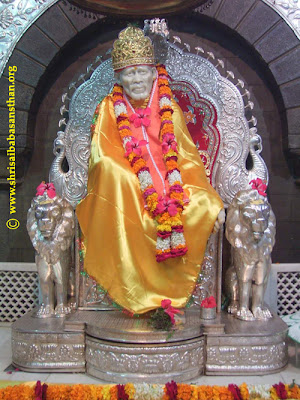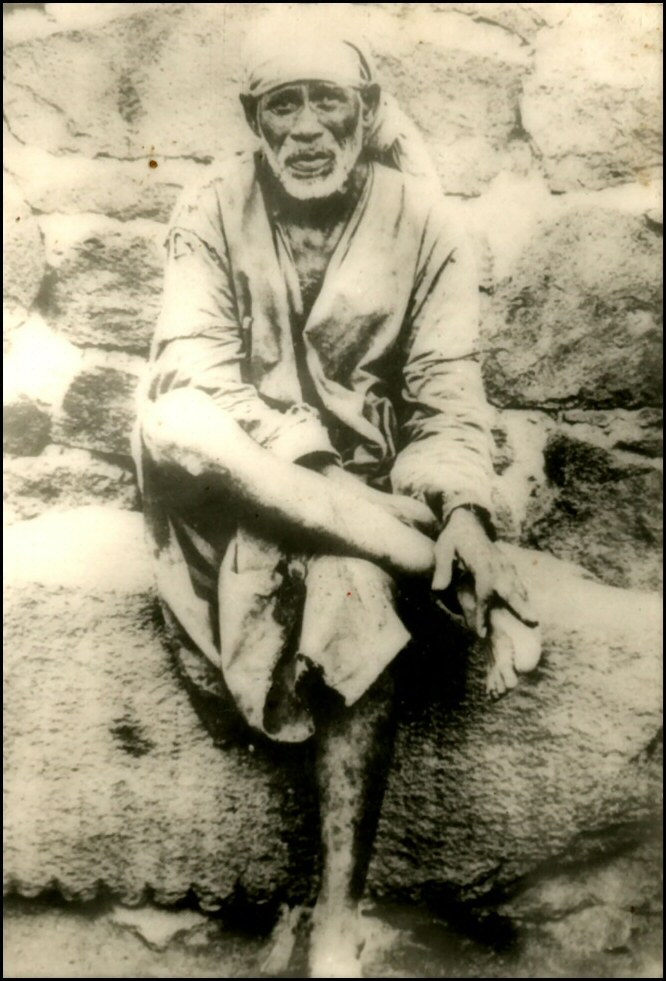










Sai Baba of Shirdi (around 1835/1838 – October 15, 1918), also known as Shirdi Sai Baba was an Indian guru, yogi, and fakir who is regarded by his Hindu and Muslim devotees as a saint. Many Hindu devotees including Hemadpant who wrote the famous Shri Sai Satcharitra consider him an incarnation of Lord Krishna while other devotees consider him as an incarnation of Lord Dattatreya. Many devotees believe that he was a Satguru, an enlightened Sufi Pir, or a Qutub. He is a well-known figure in many parts of the world, but especially in India, where he is much revered.Sai Baba's real name is unknown. The name "Sai" was given to him upon his arrival at Shirdi, a town in the west-Indian state of Maharashtra. Mahalsapati, a local temple priest, recognized him as a muslim saint and greeted him with the words 'Ya Sai!', which means 'Welcome Sai!'. Sai or Sayi is originally a Persian title given to Sufi saints, meaning 'poor one'.No information is available regarding Sai Baba's birth and place of birth.
Sāī is also of Sanskrit origin, meaning "Sakshat Eshwar" or the divine. The honorific "Baba" means "father; grandfather; old man; sir" in Indo-Aryan languages. Thus Sai Baba denotes "holy father" or "saintly father".Sai Baba remains a very popular saint,and is worshiped by people around the world. He had no love for perishable things and his sole concern was self-realization. He taught a moral code of love, forgiveness, helping others, charity, contentment, inner peace, and devotion to God and guru. Sai Baba's teaching combined elements of Hinduism and Islam: he gave the Hindu name Dwarakamayi to the mosque he lived in,practiced Hindu and Muslim rituals, taught using words and figures that drew from both traditions, and was buried in Shirdi. One of his well known epigrams, "Sabka Malik Ek " ("One God governs all"), is associated with Islam and Sufism. He always uttered "Allah Malik" ("God is King").Sai Baba is revered by several notable Hindu religious leaders. Some of his disciples became famous as spiritual figures and saints, such as Mhalsapati, a priest of Kandoba temple in Shridi, Upasni Maharaj, Saint Bidkar Maharaj, Saint Gangagir, Saint Jankidas Maharaj, and Sati Godavari Mataji.
No comments:
Post a Comment